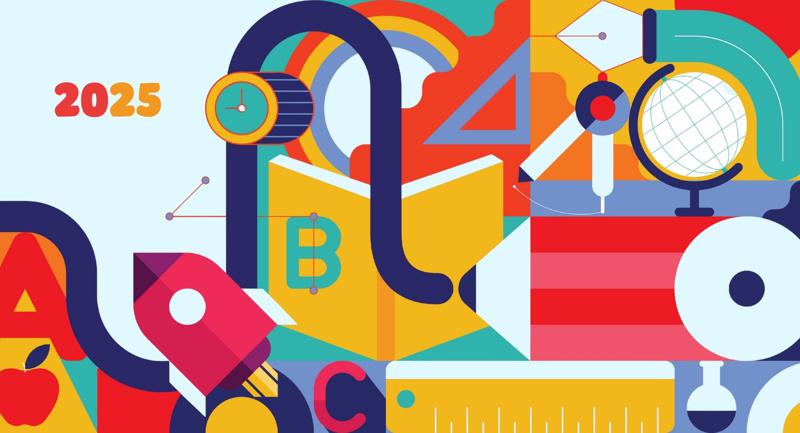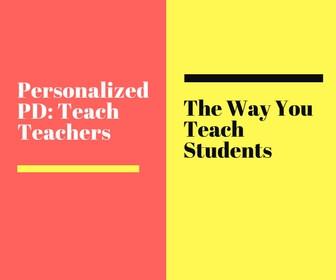Years ago, I coached a novice early-childhood teacher who was struggling. Let's call her Liz. She was committed to being a lifelong educator and was hungry for feedback. And yet, her classroom lacked structure to the point that it bordered on chaos—students were rolling around on the floor, many were in tears, and they were generally without direction. She simply did not have the necessary confidence or technical and relational skills to establish a successful learning environment. Her principal, aware of the teacher’s own concerns not only for the learning but also for the safety of her students, invited me in to help. As a turnaround coach, I knew we had a long road ahead.
Sisyphus, a figure of Greek mythology, was eternally condemned to roll a boulder up a hill, only to have that boulder roll down again each time he reached the top. This is what it used to feel like for me when coaching struggling novice teachers. Each year there were new teachers. Each year we started from the bottom. I saw new teachers come in without the skills to create a highly successful learning environment for students. As a result, as the teachers struggled, their students suffered. After years of seeing this same scenario unfold, I started to field-test different coaching methodologies beyond the “reflective conversations” that dominated the coaching literature at the time. Soon, I had amassed a wealth of practical coaching experience that supported more directiveness and was backed up by a solid foundation in self-determination theory.
Deci and Ryan’s (2002) self-determination theory asserts that for someone to be motivated to learn and improve, three social conditions must exist: relationships (connection), autonomy (perceived control), and competence (mastery over environment). In my work with Liz, I had already built a trusting relationship; she knew I was in her corner. Relationships: Check. We also discussed a course of action based on what she saw as her biggest needs. Autonomy: Check. Now we had to tackle competence.
The Competence-Supportive Coaching Model
The aptly named Competence-Supportive Coaching Model was created by Deci and Ryan to address issues of teacher competence by developing narrow sets of skills through practice rather than a simple reflective conversation.
The model includes the following features:
- Co-analysis: The coach and teacher analyze specific evidence gathered in the classroom to identify a narrow, high-leverage action step that will increase the teacher’s efficacy.
- Modeling: The coach models the action step and defines the key elements of the action step.
- Direct practice: The teacher practices the specified action step, and the coach offers feedback to ensure that the teacher has mastered the action step and can translate it into the classroom.
In other words, this coaching approach is highly directive, focusing on building a concrete set of skills that teachers can replicate in order to experience mastery.
1. How to Implement Co-Analysis
Coaches must be skilled at gathering evidence in the classroom to support the action step that will be identified with the teacher. This can include direct quotes from teachers and students, timestamps of events in the classroom, student work evidence, quantitative evidence, or other relevant data. Coaches also need to be adept at utilizing this evidence—called “low inference notes”—to assist the teacher through co-analysis to develop their own narrow, high-leverage action step.
Here are a couple of action step examples, along with non-examples that will be less effective:
Action Step Examples and Non-Examples
Example | Non-Example | |
|---|---|---|
| Classroom Management | Every time you release students to independent practice or group work, deliberately scan the room for off-task behavior: 1) Stand at the corner of the room so that you can see all students. 2) Choose 3-4 "hot spots" to scan constantly. 3) "Be seen looking": crane your neck to appear to be seeing all corners of the room. | Manage your classroom more effectively |
| Rigor and Planning | Every time a student makes an error, use a universal prompt: 1) State the student's incorrect response using a neutral tone. 2) Ask 2-3 students to agree or disagree with a student's response. 3) Stamp the correct answer. | Plan lessons aligned to the standards |
Regardless of their years of experience in the classroom, many teachers have a tendency to get lost in the weeds and become overwhelmed when trying to make improvements, which can leave them feeling paralyzed. Performing co-analysis works by narrowing the scope to a specific problem, so that the coach and teacher can focus on a single solution that will have an impact. In Liz’s case, she saw only chaos and students not meeting expectations. But the co-analysis process helped us discover that when she gave directions in a specific way, more than 85 percent of her students responded favorably.
2. How to Use Modeling
After analyzing the evidence and clearly defining the problem, the coach must break down the action step. The coach demonstrates how to do the action step, defines the key elements, and may also present commonly encountered errors. This modeling can be done in-person or could be presented through a video or an exemplar plan. With Liz, I modeled the tone she used in her directions when students responded favorably and compared it with the tone she used when they did not. I showed her where to stand and what to say when giving her directions, based on evidence I’d gathered from the observation. It helped to be clear and direct with Liz to leave no room for confusion—she saw exactly how posture and words make a huge difference.
3. How to Approach Direct Practice
The most important part of the Competence-Supportive Coaching Model is practice, practice, practice. Although it can be awkward, adults sometimes have to role-play. Yep. I said role-play.
Teachers practice the identified action step, and the coach immediately offers feedback. Although it can be awkward to watch an adult practice a skill in a one-on-one setting, it is vital to practice to achieve mastery.
Liz and I practiced a few times without students present. We role-played how she would give directions, focusing on her tone, body language, and words. After she role-played it a couple of times, we practiced the same direction skill with increased complexity.
Teachers practice the identified action step, and the coach immediately offers feedback.
Jo Lein
“Let’s play this out,” I said. “You have now given the direction with your firm tone and squaring up to the class. Now, practice it again, but this time I am not going to respond right away. I want you to repeat your direction to me specifically. Focus on your tone and body language.” She practiced this scenario and I gave her immediate feedback addressing only the tone and body language when directed toward a specific student. Slowly, Liz gained more confidence with me and, eventually, gained the same confidence when teaching directly to students.
The Takeaway
Changing the teaching practice to promote permanent habits is a challenge, and there is often much to tackle. In the case of Liz’s classroom—where students lacked structure, safety, and rigor—it was difficult as a coach to know what to prioritize. But I knew that tackling Liz’s feelings of incompetence would be essential for her long-term development as a successful educator. By leveraging the Competence-Supportive Coaching Model and taking on one narrow, high-leverage action step per coaching session (at least once a week), we chipped away at big issues as Liz steadily gained confidence.
By the end of our semester together, not only did she believe in her ability to positively impact student behavior and learning, but she also began to see the living proof of it as students grew academically. Had I taken a more passive approach (not using modeling or repetition) than a directive approach, Liz likely would not have made it through the school year, let alone have remained in the classroom today.
The Competence-Supportive Coaching Model accelerates teachers’ development because it specifically addresses some of the most pressing psychological and technical needs within the learning environment. Instructional leaders must provide support or seek out excellent coaching for teachers, early and often, so these teachers can successfully persist in the classroom and positively impact students' lives for the better.








